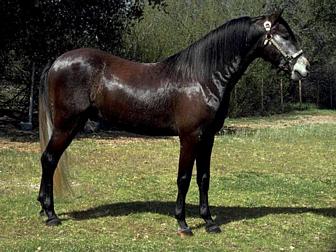
OVERVIEW
The Welsh Pony actually refers, in general, to four sections (A, B, C, and D) in the Welsh Pony and Cob Society Stud Book. Section A is the original Welsh Mountain Pony and Section C and D refer to the Welsh Cob, a heavier, scaled-up Mountain Pony. Section B is refined and a slightly larger version of the Mountain Ponies, retaining most of the characteristics of the original. The Welsh Pony is considered one of the most beautiful ponies in Britain and has run wild since long before Roman times. Today it is popular throughout the world not only for its soundness, but also for its good temperament.
PHYSICAL DESCRIPTION
Standing between 12 and 14 hands high depending on the section type, the Welsh Pony takes on the build of that of a miniature coach horse. The pony is found in all solid colors and has a beautiful oriental-type head with a bold eye and small pointed ears. The body is compact with noted depth of girth called the "Welsh breadbasket." It has a graceful neck and deep, sloping shoulders. The legs are generally hard with small hard feet. It is known for being spirited, courageous, and intelligent.
ORIGIN
Indigenous to the Welsh hills, the Welsh Pony had, before the Romans arrived in Britain, established themselves as fit, hardy animals resistant to disease. Julius Caesar introduced some Oriental blood to the pony. In the past three centuries at least two Arabian stallions have run wild in the Welsh countryside and have undoubtedly bred with the pony, most likely emphasizing the Oriental head the ponies developed during the Roman occupation. Dyoll Starlight, born in 1894, is considered the Mountain Pony's patriarch, with Tan-y-Bwlch Bewyn, foaled in 1924, being considered the Section B foundation sire.
INTERESTING FACTS
Although Welsh Pony studs exist throughout Britain and the U.S., native stock is imported to keep the breed true to type. The native stock is still taken from the feral herds that live in the mountains and moorelands of Wales. These animals exist in a Darwinian environment, inbreeding toughness and resistance to disease. Annual round-ups are held and the selected stock is put up for sale. Although prices have since gone up considerably, it is amusing to note that as recently 1948 an unbroken pony could be bought for $1.50.
INFLUENCES
1. Celtic Pony
2. Arabian
3. Welsh Mountain Pony
4. Thoroughbred
For more information:
The Welsh Pony & Cob Society
Welsh Pony & Cob Society of America